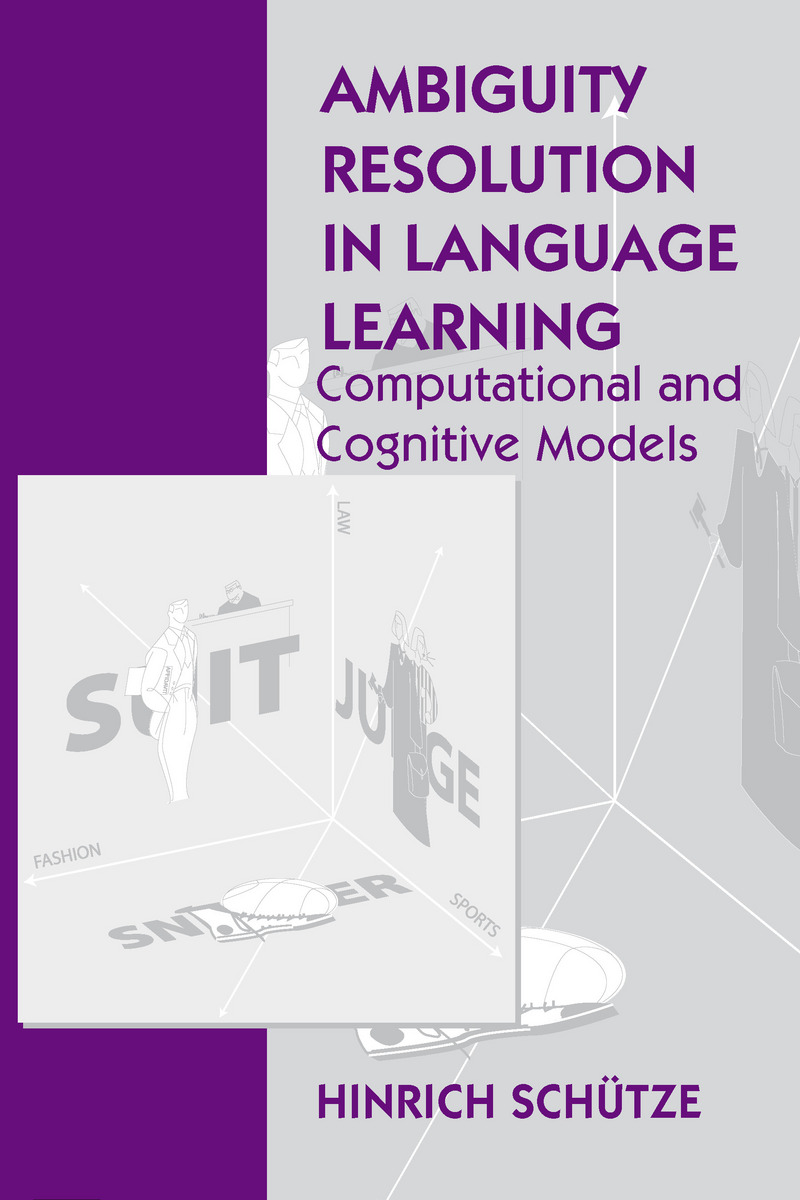Ambiguity in Language Learning: Computational and Cognitive Models
CSLI, 1997
Cloth: 978-1-57586-075-6 | eISBN: 978-1-57586-896-7 | Paper: 978-1-57586-074-9
Library of Congress Classification P118.2.S38 1997
Dewey Decimal Classification 418
Cloth: 978-1-57586-075-6 | eISBN: 978-1-57586-896-7 | Paper: 978-1-57586-074-9
Library of Congress Classification P118.2.S38 1997
Dewey Decimal Classification 418
ABOUT THIS BOOK | TOC
ABOUT THIS BOOK
This volume is concerned with how ambiguity and ambiguity resolution are learned, that is, with the acquisition of the different representations of ambiguous linguistic forms and the knowledge necessary for selecting among them in context. Schütze concentrates on how the acquisition of ambiguity is possible in principle and demonstrates that particular types of algorithms and learning architectures (such as unsupervised clustering and neural networks) can succeed at the task. Three types of lexical ambiguity are treated: ambiguity in syntactic categorisation, semantic categorisation, and verbal subcategorisation. The volume presents three different models of ambiguity acquisition: Tag Space, Word Space, and Subcat Learner, and addresses the importance of ambiguity in linguistic representation and its relevance for linguistic innateness.
